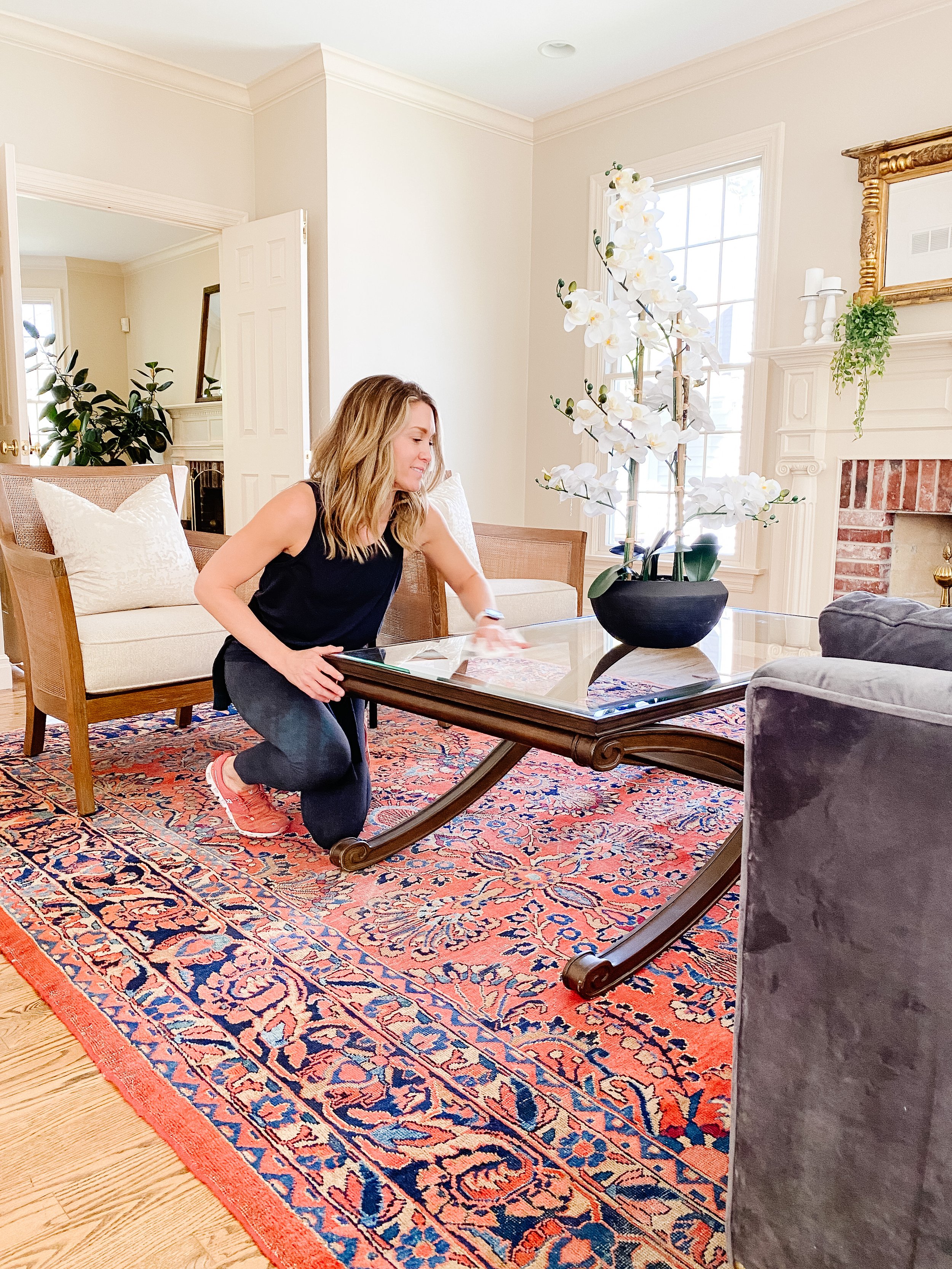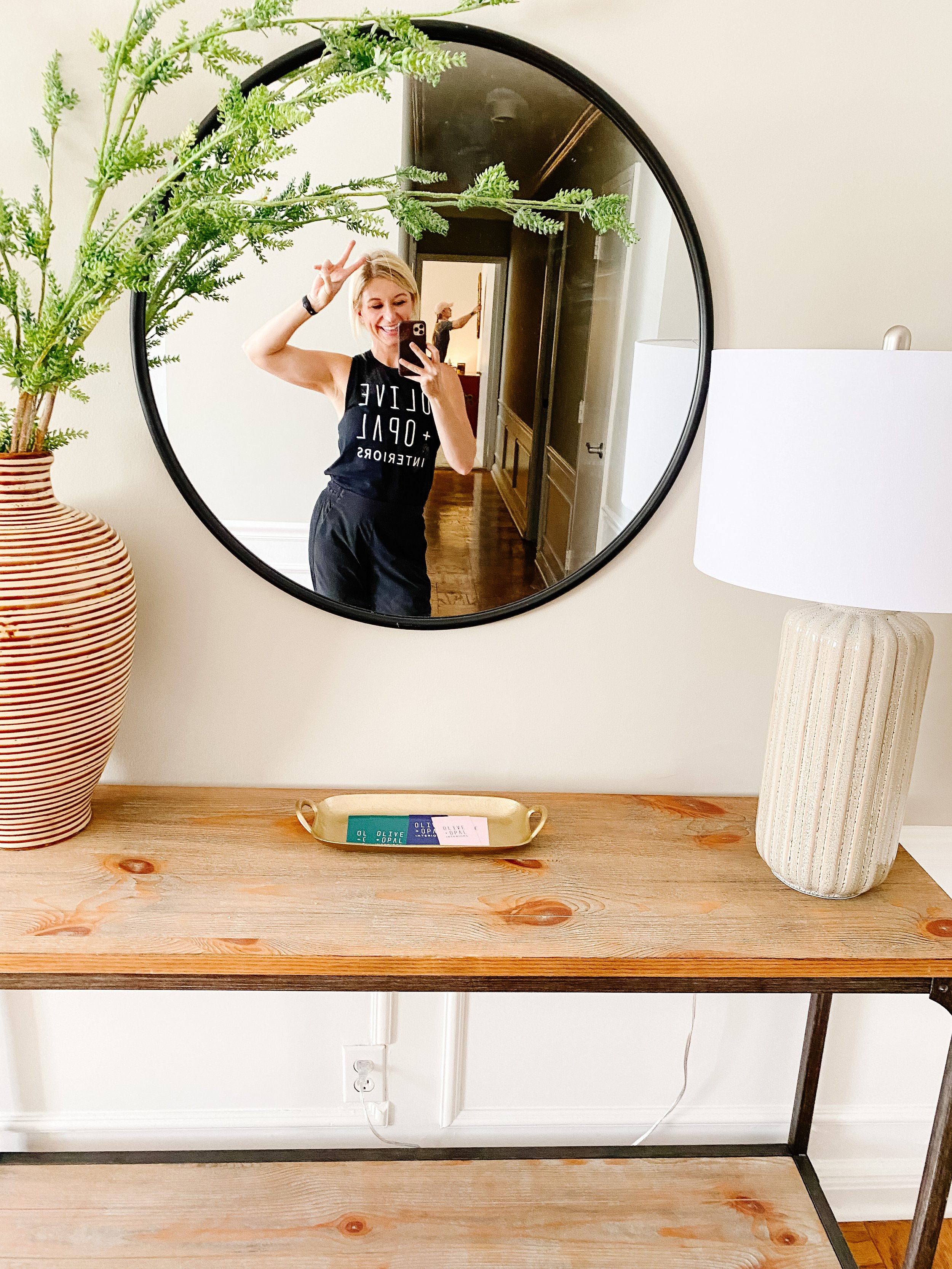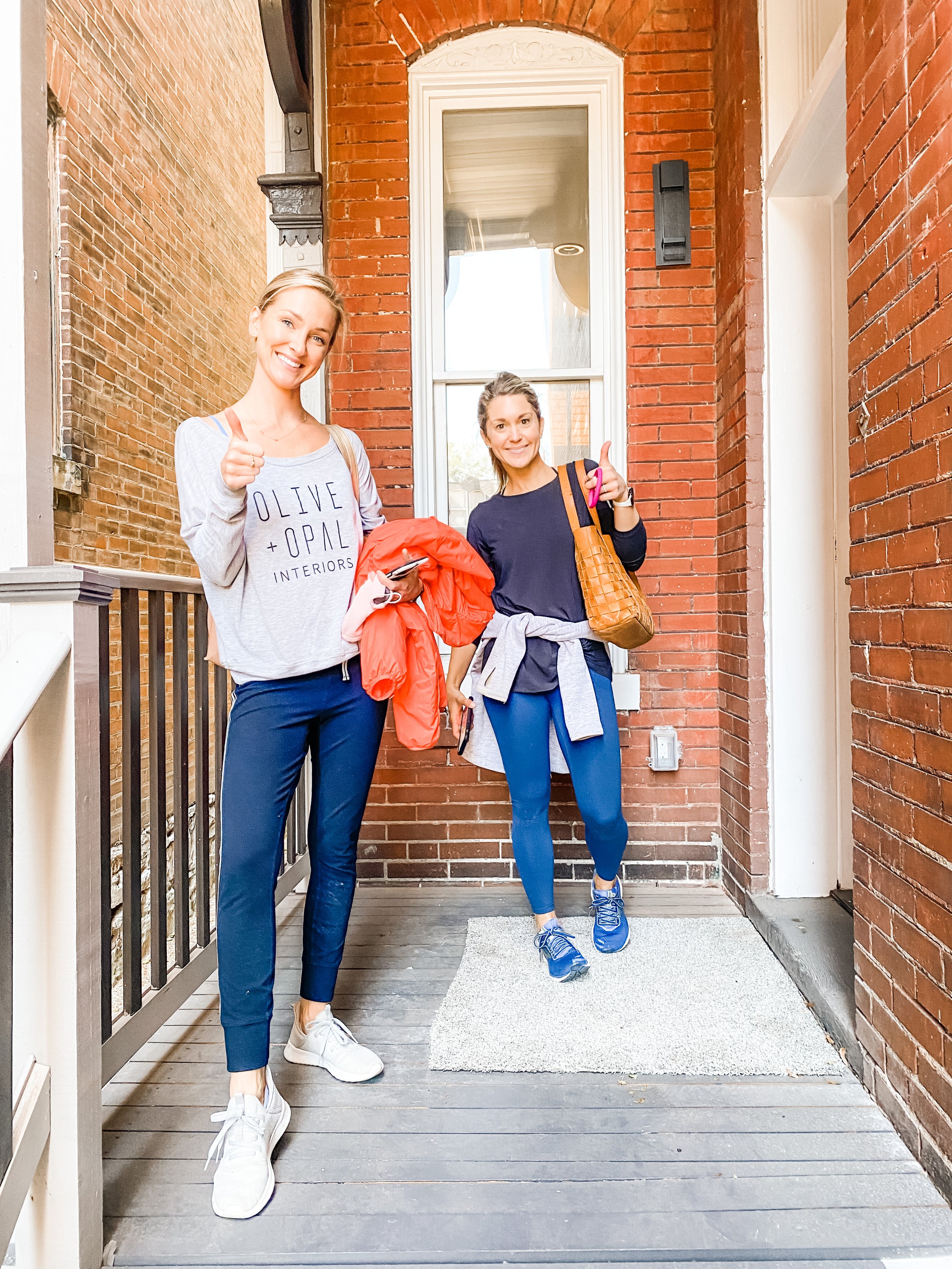how long does it take to stage
Every project is a little different, so the amount of time it takes to complete a project varies because of several reasons. Larger houses obviously can take more time, but the amount of floors and related number stairs, parking and accessibility into the property, amount of wall space (more walls = more art hanging), and open shelving areas can all play a part in the total time for installation. Our average project in St. Louis is around 3,000 square feet and barring any wild obstacles with the installation, we typically spend about 4-5 hours from start to finish. Here’s a look at a typical day!
prep and pack - 1 hour
The preparing and packing for an installation can be a significantly time consuming part of the project. We have recently implemented ways to create efficiencies in packing and have found that we’re tagging and packing both faster and smarter. One game changer was the implementation of Stageforce, our inventory management system. We finally have all our inventory logged into the system and have real time updates on quantities available and where each item is located. In addition to using Stageforce, we also tag each inventory piece with colored painters tape for the designated color of the day (i.e., Thursday’s project is purple tape). We also learned some great takeaways at RESACON for packing that have transformed what a staging day looks like. Particularly, our shift to packing strategically by room has been really impactful on our day. Historically we packed a ton of accessories and then shopped on site at the project, hoping we had enough stuff and it all worked well together. Now we set aside lamps, vignettes, soft goods and accessories for each space and pack them separately. It’s a little more labor intensive during the prep and pack, but saves us time as a whole.
load and unload- 2 hours
We typically try to have all our accessory totes and soft goods ready and labeled by the time our moving crew arrives. Stageforce allows us to generate a crew report that identifies all the furniture and art selected for the project, so we simply print the report for our movers and quickly walk through the warehouse to point out the inventory selections. Our movers are fast and efficient, but take the time and care to pack our inventory safely in the truck so this part of the day is often the most time consuming. Before we head out we do a quick lap around the warehouse to make sure we’ve packed everything for the project then load our cars with our staging bags and other items too delicate to put on the truck, like glass pieces and lamp shades. We typically stage in teams of two, so once we arrive at the project location we divide and conquer. The lead stager typically directs the moving team to place the inventory in the designated rooms of the property and the second stager begins to unpack accessories. The accessory totes are all clearly labeled with their room designation, so we save time unpacking in the room it belongs and do not waste time moving objects all around the property.
stage and style - 1-2 hours
Shockingly the staging and styling portion of the day is pretty quick. The lead stager really dictates where each item belongs during the unload so by the time the moving team is complete, rugs are already in unrolled and in place, the furniture is placed in its designated spot and the staging team gets to work. Because the accessories and soft goods are already in the correct room, it doesn’t take us long to put the finishing touches on the property. It typically takes us about an hour or two to make beds, place lamps and accessories and hang art. Occasionally this part is delayed when we realize we’re missing something or packed the wrong item (hey, we’re human!), but our efforts during the prep and pack stage make these errors few and far between.
pics, clean and pack up - 20 minutes
Once everything is in place and we’re satisfied with the final look, the staging team again divides to tackle project pictures and packing up totes and any extra unused objects. Melinda and Steph have far superior picture taking abilities, so I typically clean, pack up any extras and load our cars while Mel or Steph take pictures of the property. We take pictures for our social media channels and to keep our portfolio current, but also to have a visual reminder of what we have in each property. We always leave the house cleaner than when we arrived, so at times we need to do a little cleaning before we leave, but other than that we typically lock up and let our contact know that the project is complete.
When we first started out we spent upwards of 8-10 hours on a project. Time and experience has allowed us to be more confident in our choices and our execution, as well as allowed us to invest in more inventory that we love and get excited to use. The increased speed is also directly attributed to the warehouse efficiencies that we’ve implemented (bless you, Alicia). As we look forward, we want to increase the number of projects in a week so we need keep each project succinct and on time to accommodate that growth. But some times, it’s just nice to complete a project at a reasonable time and have the option to go knock out some other work or just go relax and feel proud about a successful day.





